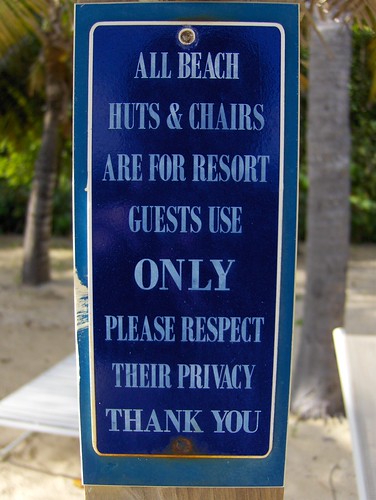Civilians Ask “What’s With All the Privacy Act Kerfluffle?”
Posted June 26th, 2008 by rybolovAnd by “kerfluffle”, I mean these articles:
- GAO Privacy Report
- Technology Liberation Front
- Center for Democracy and Technology
- And how about an analysis of the Privacy Act from DOJ for background reasons?
Well, let’s talk about how privacy and the Government works with Uncle Rybolov (please hold the references to Old Weird Uncle Harold until we’re through with today’s lesson please).
We have a law, the Privacy Act of 1974. Think about it, what significant privacy-wrenching activities happened just a couple of years prior? Can we say “Watergate Scandal“? Can we say “Church Committee“? Suffice it to say, the early 1970s was an era filled with privacy issues and is where most of our privacy policy and law comes from. Remember this for later: this was the 1970’s!
Each of the various sections of the Privacy Act deals with a particular data type. For instance, Title 13 refers to data collected by the Census Bureau when they’ll go count everybody in 2010.
The Privacy Act talks about the stuff that everybody in the Government needs to know about: how you’re going to jail if you disclose this information to a third party. For those of you who have ever been in the military or had to fill out a government form that required your social security number, the light in the back of your head should be going off right now because they all have the warnings about disclosure.

Remember to respect the privacy of the beach huts and chairs photo by Joe Shlabotnik
When it comes to IT security, the Privacy Act works like this:
- You realize a need to collect PII on individuals.
- You do a privacy impact assessment to determine if you can legally collect this data and what the implications of collecting the data are.
- You build rules about what you can do normally with the data once you have collected it. This is called the “routine use”.
- You write a report on how, why, and about whom you’re collecting this information. This is known as the “System of Record Notice”.
- You file this report with the Federal Register to notify the public.
- This IT system becomes the authoritative source of that information.
IE, no secret dossiers on the public. We’ll suspend our disbelief in FISA for a minute, this conversation is about non-intelligence data collection.
Now the problem with all this is that if you stop and think about it, I was 1 year old when the Privacy Act was signed. Our technology for information sharing has gone above and beyond that. We can exchange data much much much more quickly than the Privacy Act originally intended. As a result, we have PII everywhere. Most of the PII is needed to provide services to the citizens, except that it’s a royal PITA to protect it all, and that’s the lesson of the past 2 years in Government data breaches.
Problems with the Privacy Act:
- The SORN is hard to read and is not easy to find.
- Privacy Act data given to contractors or “business partners” (aka, state and local government or NGOs) does not have the same amount of oversight as it does in the Government.
- Data given to the Government by a third-party is not susceptible to the Privacy Act because the Government did not collect it. Wow, lots of room for abuse–waterboarding-esque abuse.
- Privacy Act procedures were written for mainframes. Mainframes have been replaced with clusters of servers. It’s easy to add a new server to this setup. Yes, this is a feature.
- If you build a new system with the same data types and routine uses as an already existing SORN, you can “piggyback” on that existing SORN.
- It’s very easy to use the data in a way that isn’t on your “routine use” statement, thus breaking the entire privacy system.
Obviously, at this point, you should have gotten the hint that maybe we need to revise the Privacy Act. I think GAO and OMB would agree with you here.
So, what alternatives do we have to the existing system?
- Make blanket data types and do a PIA and SORN on them regardless of where that data lies.
- Bend the Paperwork Reduction act and OMB guidance so that we don’t collect as much information.
- Make the Privacy Act more specific on what should be in SORN, PIA, and routine use statements.
To be honest, it seems like most of this is already in place, it just needs to get tuned a little bit so we’re doing the right things. Once again, the scale of the Government’s IT infrastructure is keeping us from doing the right thing: there isn’t enough time in the day to do PIAs on a per-server basis or to keep track of every little bit of data. You have to automate our privacy efforts in some fashion.
And this is why, dear readers, I think the Government needs DLP solutions more than the private sector does. Too bad the DLP vendors are stuck on credit cards and social security numbers.
Similar Posts:
Posted in FISMA, Rants, What Doesn't Work |  No Comments »
No Comments »
Tags: gao • government • infosec • infosharing • management • omb • pii • privacy • risk • security • stategovernment
 Posts RSS
Posts RSS
